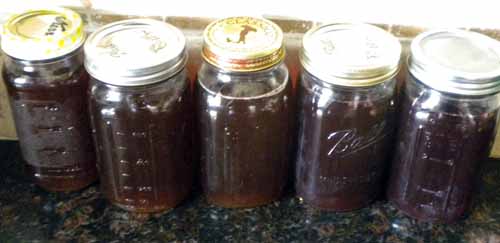
By Kate Good / onegreenplanet.org
Plastic is so ubiquitous that it can be found in or associated with nearly every tangible item in existence. Just think about how many different things you used today that either were plastic or came packaged in plastic, you’re guaranteed to come up with at least five. It’s no secret that we all have a rather sordid relationship with plastic: it’s incredibly convenient, but it’s equally wasteful.
In the U.S., we go through around 1,500 plastic water bottles every second, and it takes around 100 years for these bottles to break down. While some people look to recycling as the solution for plastic waste, the reality is only nine percent of plastic in the U.S. ever reaches a recycling facility, and the rest ends up in landfills or more likely waterways and the ocean.
There are around 270,000 tons of plastic waste floating on the surface of the oceans; plastic bags and plastic microfibers and beads make up a vast majority of this waste. All of these products are petroleum-based, and it is estimated that 12 million barrels of oil are used annually just to produce plastic bags in the U.S. When plastic finally does break down, it releases a whole slew of toxic chemicals including BPA, styrene, phthalates, vinyl chloride and dioxin, all of which end up in our air and water, and can injure or poison wildlife.
A recent study found that fish exposed to water contaminated with the endocrine disrupting compounds found in most common plastics (notably BPA) are more likely to suffer from low reproductive rates and disorders. Fish are usually exposed to these compounds by ingesting microplastics which find their way into marine environmental via our household drains. These miniscule plastics are released from synthetic clothing in the form of fibers or come from exfoliating face washes and toothpastes. Microplastics are so small that they can pass through water treatment plants unchanged and make their way into the greater watershed. When fish ingest these plastics they absorb all of the toxic compounds which cause reproductive issues. Most troubling about this finding is that adverse reproduction effects can be passed on to future generations. The long-term impact on humans are yet unknown, but the prognosis doesn’t look good.
Considering the environmental and potential health impacts that our plastic addiction may have, it’s probably a good idea to start cutting plastic out of your life. Lucky for you, you’ve come to the right place! Cutting plastic doesn’t mean cutting convenience; just check out these easy life hacks:
1. Store Produce in Towels Instead of Plastic
Plastic containers are a major culprit for both environmental and health concerns. The good news is you can swap out plastic containers and bags with a clean dish towel or cloth and keep produce fresh and crispy. Zucchini, cucumber, parsnips, leeks, green beans, carrots all last longer when you wrap them in a damp towel and store in your crisper. For lettuce greens, use a dry cloth or towel, fold it like an envelope and then tie the ends together to make a nice cloth salad knot.

2. Make Your Own Toothpaste
When you swap to DIY toothpaste, you’re likely removing plastic from your life in two ways: the plastic tube and plastic microbeads used for “extra whitening.”All you need is a small mason jar, water, baking soda, coconut oil (optional) and peppermint essential oil. For recipe details, click here.

How to Make Natural Tooth Powder at Home
3. Use Coffee Grounds to Exfoliate
Most conventional exfoliating face and body washes are made with plastic microbeads. A single tube of face wash can contain up to 300,000 microbeads, all of which enter the watershed when they are washed down the drain, sadly, not great for marine life. You can ditch the tube of exfoliating wash and easily make your own DIY scrub using coffee grounds mixed with coconut oil or avocado.

Judit Klein/Flickr
4. Replace All Your Cleaning Supplies With One Natural Alternative
You can replace nearly every single cleaning spray, scrub or fluid in your home with white vinegar. Vinegar can be used to disinfect bathroom and kitchen surfaces, shine up mirrors and silverware, and even unclog drains. Add lemon and orange peels to the bottle to get a natural citrus scent. If you buy white vinegar in bulk (go for a glass bottle), you can upcycle an old glass bottle and one of the spray tops from one of your old cleaners (rinse thoroughly), and make your own hand-held natural spray cleaner.

5. Use a Mason Jar With a Pour Top to Replace Plastic Condiment Bottles
How many different plastic bottles of condiments do you have in your fridge right now? Probably a ton. Instead, try making your own condiments and storing them in mason jars with special top attachments. For salad dressings, try tap-tops. You can also try metal pump tops for ketchup or mustard.

6. Swap Plastic Deodorizers for Essential Oils
Conventional perfumed room deodorizers not only come in plastic packaging, but they’re also filled with hidden toxins – yuck. Essential oils work just as well (if not better) than artificial perfumes, without any of the unwanted plastic or toxins. Just add a few drops of your favorite scent on the inside of the cardboard toilet paper roll for long lasting freshness in the bathroom. Or you can put a few drops mixed with water in a glass jar and add some natural wooden dowels to make a quick diffuser.

7. Use a Pressure Cooker to Avoid BPA-Lined Cans
Canned beans are a staple in any kitchen, plant-based or not. While you might think that tin cans are preferable over plastic packages or containers, most are actually lined with some form of plastic to keep the can from rusting; Bisphenol-A (BPA), a known endocrine disruptor, is commonly used. Instead, you can soak dried beans overnight and pop them in a pressure cooker for around 10 minutes and you’ve got plastic-free legumes! These can also be stored in glass jars and frozen so you always have some on hand.
 How to Make Slow Cooker Spicy Pinto Beans
How to Make Slow Cooker Spicy Pinto Beans
8. Skip the Plastic Produce and Bulk Item Bags
Chances are, you’ve already replaced plastic grocery bags with reusable ones, but most people don’t stop to think about the plastic bags they use for produce or bulk items. Before you hit the grocery store, think about what produce and bulk goods you’ll purchase and take along cloth bags or jars for these items. If you’re using jars, carry them in a wine holder to keep them from clanking all over the place. You can also find convenient reusable produce bags, here.

9. Replace Detergents With Soap Nuts
Soap nuts a wonderful non-toxic, environmentally-friendly alternative to conventional laundry and dish detergent. These little nuts contain saponin, a natural detergent, that is released when they absorb water. One single soap nut can be used for 10 loads of laundry. You can even put three or four in a muslin bag and drop them in the utensil rack of your dishwasher to get sparkling clean dishes! Not only do soap nuts replace plastic detergent jugs, but they can also be composted when you’re done with them. Check out Eco Nuts to learn more.

Lisa Brewster/Flickr
10. Use Coconut Oil and Castille Soap to Replace Shampoo and Conditioner
Ladies and gentlemen, it’s time to put an end to the complicated, plastic-filled shampoo conditioner routines. Not only do these bottles create a ton of plastic waste, but conventional shampoos and conditioners also contain plastic resins, waxes and silicones. Instead, try preconditioning your hair with coconut oil and washing it out with Castille soap. Get ready for shiny, moisturized hair, without all the added plastics!






















